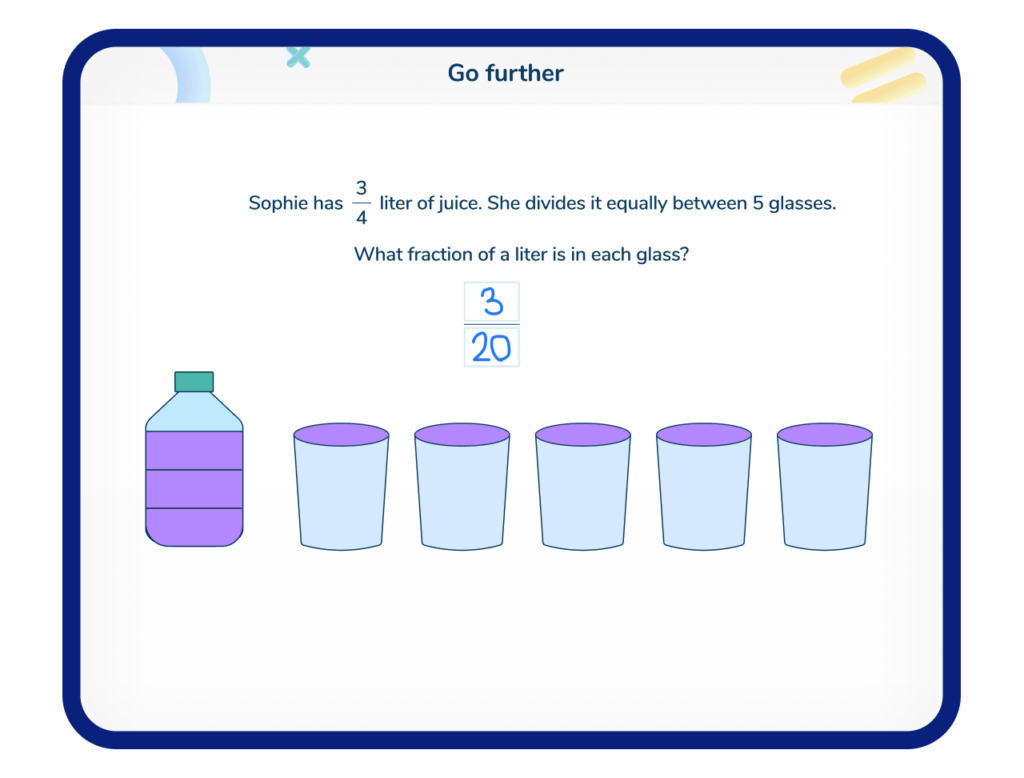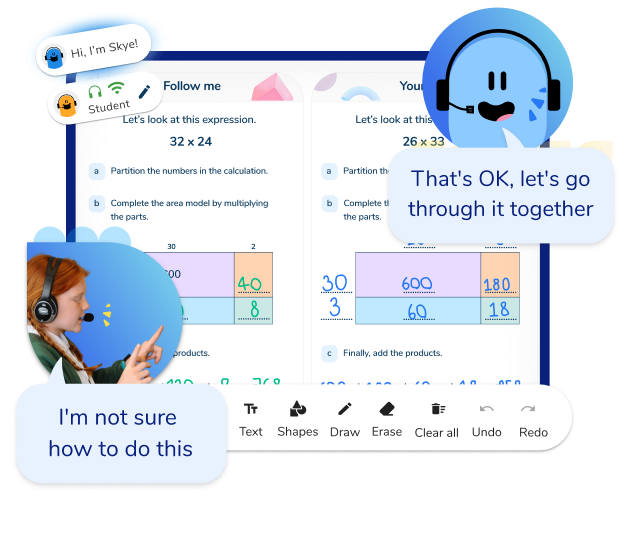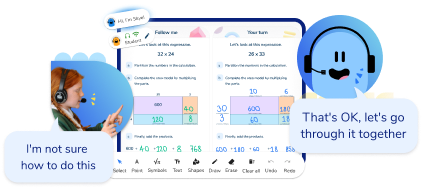Test Anxiety: 8 Strategies To Help Students Manage And Overcome It
Test anxiety appears to be rising in the US as tests are typically viewed as a necessary factor of student success within the education system in the United States. Yet, for many individuals, the mere thought of taking a test can trigger a cascade of anxiety-inducing thoughts and sensations.
With roughly 10 million American children affected by test anxiety, trying to reduce feelings of anxiety is a crucial focus area for educators, counselors, and administrators alike.
While test anxiety is common, it can be a significant barrier to academic achievement and personal well-being. This article explores the depths of test anxiety; its causes, symptoms, and most importantly, strategies for overcoming it.
What is test anxiety?
Test anxiety is more than just pre-exam jitters; it’s a debilitating experience that can significantly impact academic performance and mental health. Students of all levels from kindergarten through to college students can experience test anxiety, it is not restricted to academic ability.
According to the Anxiety and Depression Association of America (ADAA), test anxiety is a type of performance anxiety. Formally, it is defined as “tension and apprehensiveness associated with taking a test, frequently resulting in a decrease in test performance” (APA).
Test anxiety is often linked to subjects with answers deemed right or wrong. Math anxiety and test anxiety can often present some of the same symptoms. In both cases, students need to develop a growth mindset.
Ultimate Guide to Problem Solving Techniques
Help your students overcome test anxiety with these 9 ready-to-go problem solving techniques to build familiarity and confidence early on!
Download Free Now!Negative impacts of test anxiety on academic performance
Students facing test anxiety tend to have poor performance when compared to students who do not. There is some debate about why this is, including two popular thoughts:
- Students with test anxiety avoid the anxiety of their next exam through procrastination and avoiding studying.
- Students with test anxiety struggle to recall information during exams out of fear or their inability to focus on the content due to their anxiety.
Long-term consequences of untreated test anxiety
If left untreated, the long-term consequences of test anxiety can be profound, affecting not only academic success but also self-esteem and future opportunities.
Without proper management, the anxiety disorder can become uncontrollable. Students who learn coping strategies are more likely to overcome their struggles.

Meet Skye, the voice-based AI tutor making math success possible for every student.
Built by teachers and math experts, Skye uses the same pedagogy, curriculum and lesson structure as our traditional tutoring.
But, with more flexibility and a low cost, schools can scale online math tutoring to support every student who needs it.
Watch Skye in actionCauses of test anxiety
There is no finite cause of test anxiety. It can be brought on by a variety of factors: both intrinsic and extrinsic.
1. Fear of failure and perfectionism
Today’s students face increased pressures to succeed. One test can make all the difference to their future, be it which class they are set in, which college they get into, or what their final grade is.
This can cause students to develop perfectionist tendencies. Intense pressure can make every test feel like an assessment of self-worth rather than knowledge.
2. High expectations from self, parents, or teachers
The competition to get into top schools or rank at the top of the class has increased. Students are taking more rigorous classes, like AP or Dual Enrollment, trying to compete.
Pressure from unrealistic expectations can seep into test performance, distracting students from the content at hand during the test itself.
3. Lack of preparation and study skills
Naturally, some students are not good test takers. Or, rather, test preparers. This tends to affect students who had school “come easy” to them for any length of time. They may not have previously needed study skills and find themselves at a loss.
Other students find themselves paralyzed trying to prepare for a test. The anticipation of the upcoming exam is enough to deter them.
Some may just procrastinate because they don’t know where to start with test preparation, even if they know it will cause them anxiety on test day.
Many students do not understand how to review for tests and spend the night before doing some last minute cramming of a year’s worth of course content. It’s crucial that educators not only teach the content but also teach students how to review. In turn, this could reduce test anxiety for many students.
Teaching content using a spiral curriculum also ensures students learn and build on the required content more than once before a test
4. Previous negative experiences with tests
Like any experience, a prior negative experience can tarnish future ones. Perhaps a student studied tirelessly for a test and then performed poorly. Or they forgot about the test and prepared poorly. Both experiences can increase negative connotations with future tests that increase fear and avoidance.
Identifying test anxiety
Knowing the signs of test anxiety can make all the difference in a student’s life. Students don’t always know they have test anxiety. Or even that it exists. Identification helps give students the resources they need for success.
Common signs and symptoms of test anxiety
Students who suffer from test anxiety can experience a wide variety of symptoms. Some symptoms are easier to spot than others.
It’s good practice to make students aware of these symptoms so they can recognize them in themselves as well as others and assess whether they need to seek additional support.
Physical symptoms
Students with test anxiety frequently exhibit physical symptoms. Pay attention to students who frequently ask to use the restroom or complain of headaches on assessment days.
Other physical symptoms may include:
- Rapid heartbeat
- Sweaty palms
- Nausea
- Excessive sweating
- Shortness of breath
- Dry mouth
Cognitive and behavioral symptoms
Often, students with test anxiety are distracted in some way. Some students procrastinate at all costs while others fall into a cycle of negative thoughts.
Other cognitive symptoms include:
- Racing thoughts
- Inability to focus
- Catastrophizing
- Panic attacks
- Fight-or-flight mode
- Self-doubt
Emotional symptoms
Test anxiety can affect students at their core. Some find themselves in a vicious cycle, analyzing all possible outcomes of a poor test grade. Others will begin comparing themselves to their peers, engaging in negative self-talk even before they’ve taken the test.
Other emotional symptoms may include:
- Low self-esteem
- Depressive symptom
- Frustration
- Irritability
- Feeling overwhelmed
- A sense of hopelessness
However anxiety around tests presents, students find themselves having difficulty concentrating, which ultimately inhibits their performance.
Recognizing the difference between normal nervousness and test anxiety
It is normal to feel pressure before a test. Wanting to do well and being anxious about the results is normal nervousness.
Once students begin to hyperfixate or panic to their own detriment, they begin exhibiting signs of test anxiety.
Acknowledging test anxiety can be as stressful as experiencing it. Letting students know they are supported is the first step. Reassure students facing test anxiety that it is common.
Share the definition and symptoms and inform them of the resources available to them. Encourage them to speak with a trusted adult. Tread carefully with individualized conversations – this can be a delicate topic for many students.
8 tried and tested strategies to overcome test anxiety
What can you do for students to help with test anxiety? Here are 8 tried and tested teaching strategies and learning strategies to help students deal with test anxiety.
There are many ways to share these strategies with students throughout the year:
- Display them on a poster
- Hold mini-workshops
- Integrate them into daily lessons
Before a test
1. Develop effective study habits and time management skills
Hopefully, students hear discussions about the the importance of studying and having proper study habits. But have they explicitly been taught any? Can they put them into action?
Teach students how to:
- Annotate text
- Highlight important information rather than the whole text
- Create a study schedule
- Time block in a planner
READ MORE: How To Learn Math
Ensure students are familiar with the format and structure of the test. Introduce past papers and exam-style questions to lessons to build familiarity.
If students feel familiar with the look and style of the test paper and question formatting, they will be less likely to feel stressed or anxious when faced with the materials in the actual test.
Working in timed conditions also builds familiarity with the exam format. Regularly working through the first five or ten questions on a paper in a given time limit can replicate the test setting in a low-stakes environment. Timed practice does not necessarily need to take place under test conditions.
Online one-on-one high impact math tutoring session use exam-style questions to familiarize students with the types of questions and formats they will encounter in math tests.
Math specialist tutors work one-on-one with students and use a ‘follow me, your turn’ pedagogy to help students progress from guided to independent practice.
Go further questions provide students with the opportunity to apply their maths knowledge and skills in an unfamiliar, test-style context.

2. Utilize relaxation techniques and stress management strategies
Though older students may be hesitant, teaching students relaxation and stress management strategies can help lower their stress hormones.
An added perk? These techniques can be used prior to and during a test without distracting others.
Popular deep breathing exercises include:
- 4-7-8: Encourage students to breathe in for 4 seconds, hold their breath for 7 seconds, and exhale for 8 seconds. Repeat as many times as needed.
- Star breathing: Students can visualize a star, trace along an image of a star or their open hand in a star shape. Instruct them to inhale along one side of the star tracing the shape with one finger. Once they reach the peak, they exhale down the next side. Students repeat this until they have mentally or physically traced the shape of a star.
- Triangle breathing: Like star breathing, students follow the shape of the triangle in their minds. They inhale for three seconds as they imagine the first side of a triangle, hold their breath for the second side of the triangle and exhale for three seconds along the final side. Again, repeat as many times as required.
For older students, suggest they turn to their phones. There are a number of popular stress-relieving apps that are free and designed for students by cognitive behavioral therapists.
3. Seek support from teachers, counselors, or support groups
With the fast-paced school day, it’s easy for students to feel like they are just another number in the school population. Remind them they have a support system.
Not all students can turn to family as a support system so keep this focused on the school family:
- Trusted teachers
- Counselors
- Peer groups
Tell them they are not alone and someone is always willing to listen and support them.
4. Create a positive test-taking environment
On test day, create an environment that fosters comfort and retention. Remind students of the learned strategies and even lead a quick breathing session.
Set the tone for a positive testing experience.
5. Build confidence and a positive mindset
As tests near, remind students that they’ve learned everything they need to for the test. Providing positive feedback and encouragement helps develop their sense of self-confidence and improves the student’s experience of taking a test.
During
6. Improve focus and concentration during exams
Armed with stress management and test taking skills, students are ready to face their exams.
Help maintain an optimal test taking environment. Wherever possible, eliminate distraction.
Set up class policies that limit movement throughout the room and have clear expectations for what is acceptable to do after completing a test.
If the test is not timed, encourage the class to take as long as they need. This allows students to focus on their own tests rather than the speed of their peers.
7. Utilize positive self-talk and visualization techniques
Encourage students to talk themselves through their tests. There is inevitably going to be a question that stumps them. Teach them to internally break the question down and talk through the steps to solving the problem.
For an added motivator, help students come up with mantras they can repeat to themselves internally while they are testing. Something they create that resonates with them.
Reminding students to use the breathing techniques at this stage is also useful if they begin to panic.
8. Manage time effectively during tests
Time management is the ultimate test taking strategy. Encourage students not to get caught up on one question. If possible, tell students to flag questions they are stuck on and come back to them later.
Moving on and coming back to a question can increase confidence as students answer more questions that they know the answer to.
Teach test time management in class before the test. Not all questions are created equal. If a question is worth one mark, students should know not to spend too long on that question compared with a two or three mark question.
Seeking professional help
If a student is not showing signs of being able to control or manage their test anxiety, it is time to speak with their parent/guardian and counselor.
It will be clear the student has reached this point when they cannot function on test days, perform significantly lower on tests than other assessments, or become altogether avoidant.
Common treatments and interventions include talk therapy and cognitive-behavioral therapy.
Cognitive behavioral therapy is growing in popularity, especially in schools. It teaches students to challenge negative thoughts with positive ones, such as adopting a growth mindset.
Test anxiety can be an indicator of learning disabilities or mental health disorders. Students should receive early Response to Intervention and a MTSS to assess the origin.
Conclusion
Test anxiety is a frustratingly common issue faced by students of all grade levels. As educators, it’s crucial to understand the impact of test anxiety on students and be fully equipped with the tools needed to support them.
Remember to advocate for your students. Learn what you can and lean on experts to take the reins where your expertise ends.
As educators, you know your students’ learning needs best! Just don’t forget to emphasize the best test strategy: a good night’s sleep the night before.
READ MORE: What The Best Elementary Math Teachers Do
Frequently asked questions
How do I overcome test anxiety?
There are many strategies to help you overcome test anxiety before, during and after a test. Learning how to study efficiently can help ease test anxiety, a long with getting a good sleep before the exam, learning relaxation techniques, eating and drinking healthily and exercising.
What are four symptoms of test anxiety?
Test anxiety symptoms come in all forms, four common physical symptoms of test anxiety include: increased heartrate, sweating more than usual, a dry mouth and feeling nauseous.
How to overcome test anxiety?
There are many strategies to help you overcome test anxiety before, during and after a test. Learning how to study efficiently can help ease test anxiety, a long with getting a good sleep before the exam, learning relaxation techniques, try to stay focused, taking deep breaths and practicing test technique before the day.







